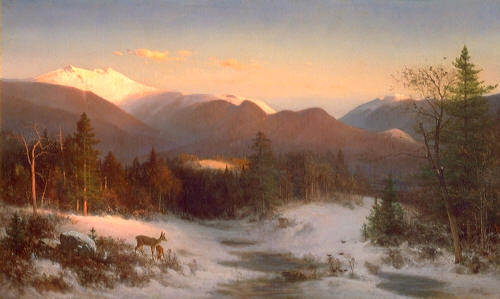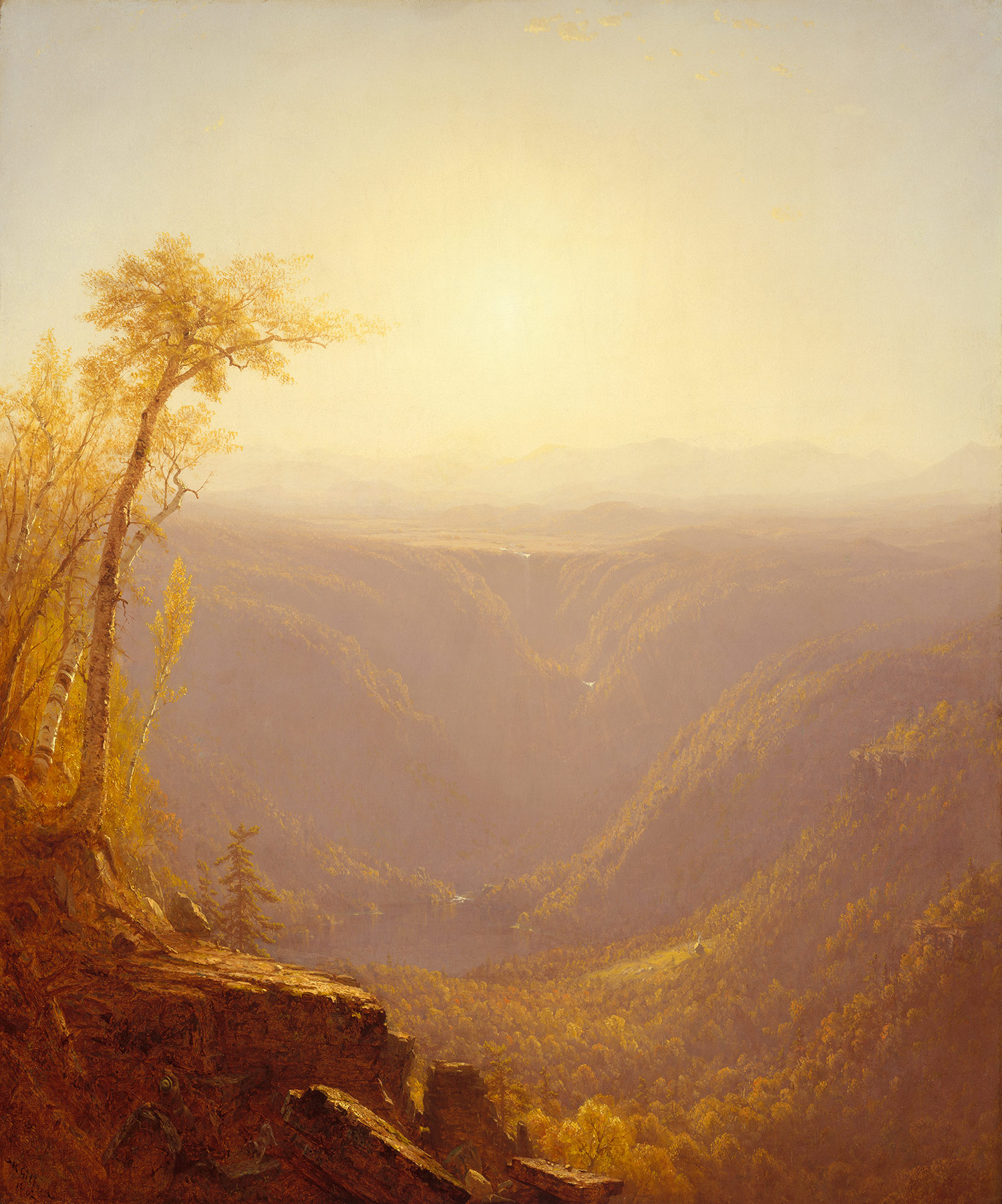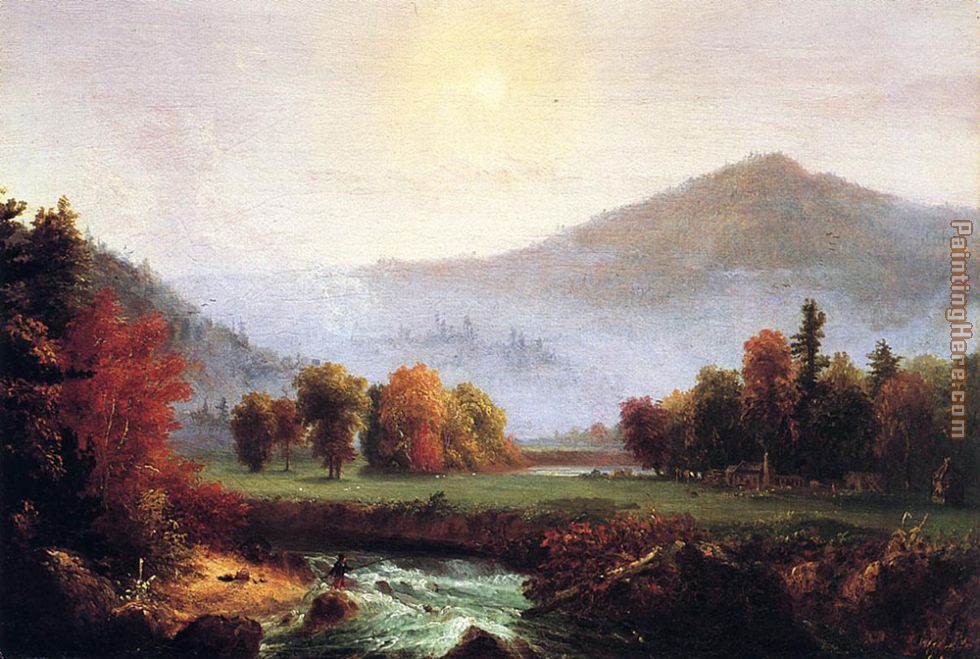
Reading for Pleasure
Be a skilled, passionate, habitual, critical reader.
Monday, February 27, 2012

Friday, February 17, 2012
Albert Bierstadt
Albert Bierstadt was a German-American painter, who was best known for his lavish, sweeping landscapes of the American West. In his works, Bierstadt joined several journeys of the westward expansion. Even though he was not the first artist to record these sites, Bierstadt was the probably the best painter of these scenes for the rest of the 19th century.
The painting has a good amount of light that shows it is not complete daylight but also not complete darkness. It is a very different kind of picture that portrayed something that was going to happen. It was a little bit of a darker romantic picture but it is beautiful and admirable. Half of the painting is light and the other half is almost dark because the storm is coming so it is starting to get a little bit more gloomy.
The focus of the painting makes your eyes go to right at to above the lake looking at the circular trees in the middle because it is the center and it attracts attention. Also, the animals on the small peninsula look as if they are very small to make the rest of the scene look huge.

The Last of the Buffalo

This Painting, named "The Last of the Buffalo," was painted by Albert Bierstadt. Albert Bierdtadt was born January 7th 1830, he was a German-American painter and is known for his huge, detailed landscapes. He traveled West a number of times and painted many pictures of the journey as well as the landscapes he saw.
Frederic Edwin Church, Twilight Wilderness

Frederic Edwin Church was born on May 4, 1826 in Hartford, Connecticut. He painted landscapes. He was wealthy due to his fathers profession as a silversmith and watchmaker. He became the student of Thomas Cole at the age of eighteen and learned a lot from him. He lived in New York and painted a lot of the scenery around him. He died on April 7, 1900.
In this painting,"Twilight Wilderness", the colors are on the dark side. The lines are wavy and curved. The colors are dark because of the sunset in order to set the mood. The shapes are all organic because the picture is of nature. The texture appears to be smooth.
The rhythm is from left to right because the colors get darker and darker as to go across. The focus is on the mountains because they are darker than everything else. The emphasis is on the water and trees. There is unity and balance in the painting with the mountains on one side and the tall trees on the other. I like this painting because of the colors used and the way the mountains stand out because of the darkness of them.
Thursday, February 16, 2012
The Coming Storm
This picture was painted by Albert Bierstadt. It was put in the Addison Gallery of American Art in Andover in 1869 the same year that the transcontinental railroad was completed. It was a very different kind of picture that portrayed something that was going to happen. It was a little bit of a darker romantic picture but it is beautiful and admirable. The painting makes me want to look at the lake. The animals make the scenery look a lot bigger and more majestic.

Albert Bierstadt
- Its a satisfying painting of life in the south back in the day.
- The painter wants us to look at the bright sunset and texture of the sky and atmosphere.
- · It looks like a cowboy life in a canyon of some sort.
- · There is a group of livestock and many other animals
- · Also people on horseback herding the animals
- · It looks like they are on a trail.
- · There is a reflection of the sunset on the little ponds making it beautiful scenery.
- · It was painted by Albert Bierstadt.
- · The texture and lines are very intriguing. They show the difference in the mountain shape and the difference in tree.
- · The shapes of the trees and animals show the measure and texture of the painting.
Classical Landscape With Ruins

Landscape with Ruined Tower

Thomas Cole was an English-born American artist. He is regarded as the founder of the Hudson River School, an American art movement that flourished in the mid-19th century. Cole's Hudson River School, as well as his own work, was known for its realistic and detailed portrayal of American landscape and wilderness, which feature themes of romanticism and naturalism.
"Sunny Morning on Hudson River"
Spirit of War- Jasper Francis

The Catskills

Thomas Cole

Thomas Cole was an English born American artist. He is the founder of the Hudson River School, which was an American art movement in the 19th century. He painted wilderness and landscapes, with styles of romanticism and naturalism.
This painting captures the water's beauty in this scene, and at the same time, captures its strong waves against the shore rocks. There are no people portrayed. The rhythm of the painting forces my eyes to follow the wave of the water, then up to the bright sky, then back to where the water is breaking.
Thomas Doughty, Ruins in Landscape, 1828

Wednesday, February 15, 2012
Thomas Doughty

Thomas Doughty, who was much recognized as "one of the pioneers of our landscape Art," was born in Philadelphia in July 19, 1793. He was the first American artist to work in landscapes. His landscape paintings reflects the influence of English school of landscaping. One of the painting named Denning's Point, Hudson River, which is shown above, exemplifies how his drawings had quiet and pastoral landscape of nineteenth century.

Thomas Hill
 Thomas Hill was born in England. At the age of 15, his family moved to America and settled in Massachusetts. As a student, he went to the White Mountains of New Hampshire and drew with members of The Hudson River School. He made yearly trips to Yosemite Valley. He died in 1908.
Thomas Hill was born in England. At the age of 15, his family moved to America and settled in Massachusetts. As a student, he went to the White Mountains of New Hampshire and drew with members of The Hudson River School. He made yearly trips to Yosemite Valley. He died in 1908. Tuesday, February 7, 2012
A Gorge in the Mountains

Monday, February 6, 2012
Sunny Morning on Hudson River
Hudson River Painting-Tywkiwdbi

View of The United States


Hudson River
 This shows the Hudson river in between land and a mountain. This painting shows depth and gives me the ability to immerse myself within the picture. I like the details of the nature and how it looks lighter and more faded over the distance. The painting's details and depth made me want to examin the whole thing.
This shows the Hudson river in between land and a mountain. This painting shows depth and gives me the ability to immerse myself within the picture. I like the details of the nature and how it looks lighter and more faded over the distance. The painting's details and depth made me want to examin the whole thing.
The Expulsion from the Garden of Eden by Thomas Cole
 "The Expulsion from the Garden of Eden" was drew by Thomas Cole to demonstrate the beauties when America was in wilderness, settling in new land of God's glory.
"The Expulsion from the Garden of Eden" was drew by Thomas Cole to demonstrate the beauties when America was in wilderness, settling in new land of God's glory. The Stranded Ship by Asher Durand
Romantic Painting Stuart KirbyFrederick Church, "Aurora Borealis"

Winter Landscape, Valley of the Catskills
This picture is called Winter Landscape, Valley of the Catskills and is painted by Charles Herbert Moore. The romantic aspect of this painting is the valley below and the mountains far in the view. the artist includes details with the added snow on the trees shows nature as benevolent. Nature is pictured as subtle and gentle in this picture. The painting gives a peaceful feeling to a viewer and makes them feel comfortable.



